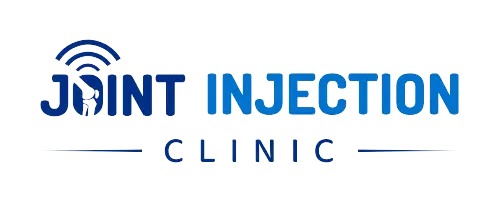Achilles Tendinopathy: Causes, Symptoms, and Treatment
Reviewed By – Dr. Sameer Gohir
PhD, MSc, PG Cert MSK ultrasound, PG Cert. Non-Medical Prescribing, MCSP, MAPPN
What is Achilles Tendinopathy?
Achilles tendinopathy is a common condition characterized by pain, stiffness, and swelling in the Achilles tendon, which connects the calf muscles to the heel bone.
This overuse injury can occur in individuals of all activity levels and is prevalent among athletes involved in running, jumping, and other high-impact sports. Understanding the causes and effective treatments is crucial for managing and preventing this condition.
If Achilles tendon pain or stiffness is limiting your ability to walk, exercise, or enjoy daily activities, you don’t have to manage it alone. With clinics near Kent and Essex, Joint Injection Clinic offers expert treatments to relieve pain and support your recovery.

Common Causes of Achilles Tendinopathy
Achilles tendinopathy develops primarily due to prolonged stress and overuse of the tendon. Key contributing factors include:
Symptoms of Achilles Tendinopathy
Individuals suffering from Achilles tendinopathy may experience:
How Is Achilles Tendinopathy Diagnosed?
Diagnosis of Achilles tendinopathy typically involves:
Treatment Options
Non-Surgical Treatment for Achilles Tendinopathy
Most cases of Achilles tendinopathy respond well to conservative treatments:
Advanced Treatment Options for Achilles Tendinopathy
If symptoms persist despite conservative management, further interventions may be needed:
Prognosis
Recovery time for Achilles tendinopathy varies, depending on the severity of the condition and adherence to treatment. Most individuals see improvement within several weeks to a few months. However, complete recovery may take longer, particularly for those with chronic tendinopathy.
Prevention Tips
To reduce the risk of Achilles tendinopathy:
Conclusion
Achilles tendinopathy is a common yet manageable condition with appropriate treatment and preventive strategies. Early recognition, thorough management, and modifying risk factors can lead to a full recovery and return to physical activities.
Get Help for Achilles Tendinopathy at Joint Injection Clinic
If Achilles tendinopathy is causing heel pain, stiffness, or difficulty walking and exercising, you don’t have to face it alone. At Joint Injection Clinic, our experienced team provides evidence-based treatments to reduce pain, promote tendon healing, and improve your mobility.
We welcome patients at all three of our clinics:
Dartford Clinic – ideal for those in Kent and South East London
Address: Unit 30, 1st Floor, The Base Dartford Business Park, Victoria Road, Dartford, DA1 5FS.
Romford Clinic – easily accessible from Essex and Greater London
Address: Room no 8, Alliance Office Space 2-4 Eastern Road, Romford, Essex, RM1 3PJ.
Canterbury Clinic – serving East Kent and surrounding areas
Address: 12-17 Upper Bridge Street, Canterbury, CT1 2NF, United Kingdom.
From ultrasound-guided assessments and precision treatments to tailored physiotherapy and rehabilitation plans, our specialists can help manage Achilles tendon pain effectively and support your return to comfortable movement.
